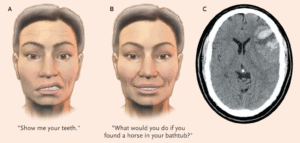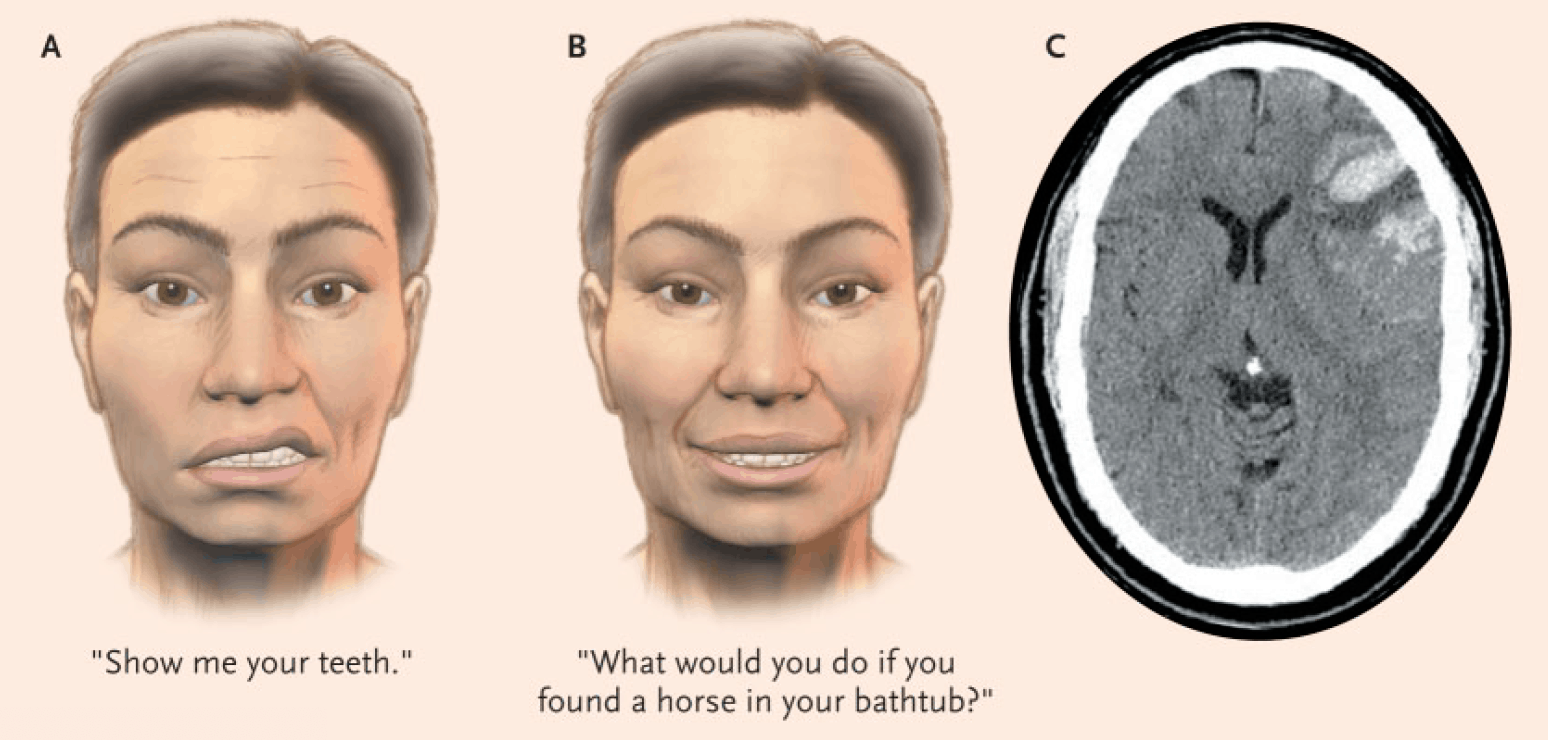When examining a patient with a facial nerve palsy and we wish to determine if the lesion is central or peripheral, we are often told do not ask the patient to smile. It always seemed strange to me. Here’s the reason….
When examining a patient with facial weakness, with a potential central cause, we need to and differentiate voluntary from involuntary(mimetic) responses.
Here is what I mean:
Asking the patient to “Show me your Teeth” requires a voluntary response, so does “Smile”. However if I asked the patient something which would illicit a mimetic or involuntary response, it usually illicits a smile. You can think up your own phrase. One I saw recently was “What would you do if you saw a horse in your bathtub?” If the voluntary response shows greater weakness than the involuntary response, it means that the cerebral cortex is more damaged than the subcortical structures. If the opposite occurred it would men a deep seated contralateral hemispheric lesion.

NEJM, Sept 23 2004 351;13:1323-31
In the image above, the facial weakness is more marked during the voluntary than involuntary response. This indicates a cortical lesion. If we compare this with the image below, we see that the involuntary response unmasks a more pronounced lesion. This indicates a deeper lesion.

NEJM, Sept 23 2004 351;13:1323-31
For more Clinical Examination Pearls go to the following:
The Head Impulse Test
Examination of the Hand
Neuro Exam Pearls: The Upper Limb
The Oculocephalic Reflex
The Relative Afferent Pupillary Defect
The Jolt Test




